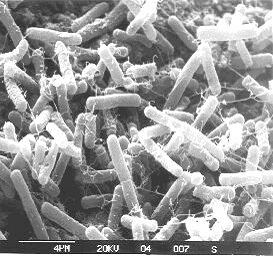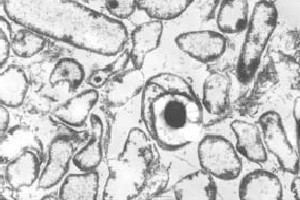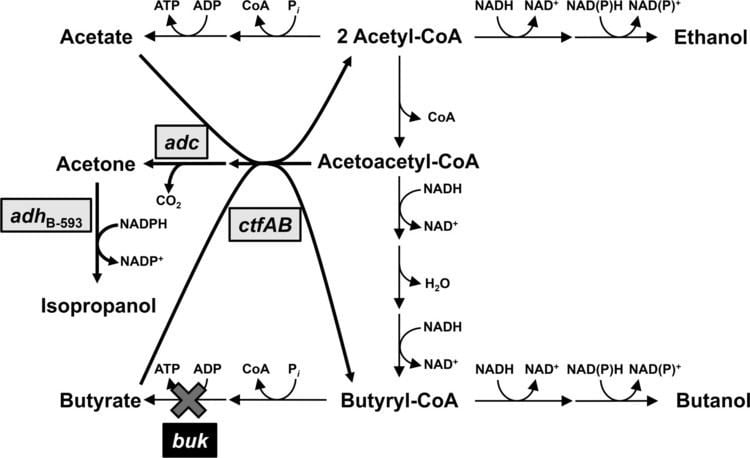Kingdom Bacteria Order Clostridiale Higher classification Clostridium | Rank Species | |
 | ||
Scientific name Clostridium acetobutylicum Similar Bacteria, Clostridium beijerinckii, Clostridia, Clostridium butyricum, Clostridium thermocellum | ||
Clostridium acetobutylicum, ATCC 824, is a commercially valuable bacterium sometimes called the "Weizmann Organism", after Jewish-Russian-born Chaim Weizmann. A senior lecturer at the University of Manchester, England, he used them in 1916 as a bio-chemical tool to produce at the same time, jointly, acetone, ethanol, and butanol from starch. The method has been described since as the ABE process, (acetone butanol ethanol fermentation process), yielding 3 parts of acetone, 6 of butanol, and 1 of ethanol. Acetone was used in the important wartime task of casting cordite. The alcohols were used to produce vehicle fuels and synthetic rubber.
Contents
- B b atmospheric vs anaerobic processing of metabolome samples in clostridium acetobutylicum
- In genetic engineering
- References

Unlike yeast, which can digest sugar only into alcohol and carbon dioxide, C. acetobutylicum and other Clostridia can digest whey, sugar, starch, cellulose and perhaps certain types of lignin, yielding butanol, propionic acid, ether, and glycerin.

B b atmospheric vs anaerobic processing of metabolome samples in clostridium acetobutylicum
In genetic engineering

In 2008, a strain of Escherichia coli was genetically engineered to synthesize butanol; the genes were derived from Clostridium acetobutylicum. In 2013, the first microbial production of short-chain alkanes was reported - which is a considerable step toward the production of gasoline. One of the crucial enzymes - a fatty acyl-CoA reductase - came from Clostridium acetobutylicum.

